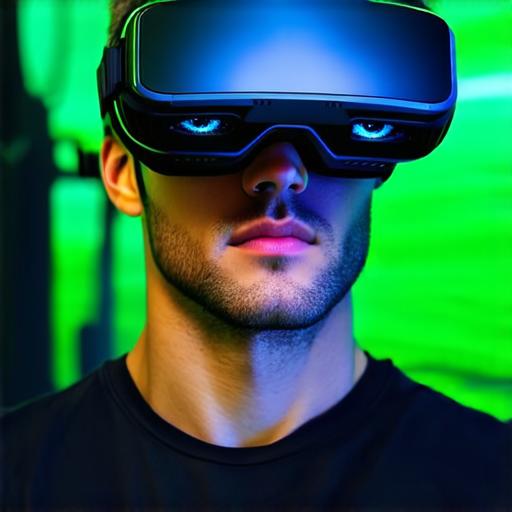
Is virtual reality realistic and immersive?
Introduction: What is Virtual Reality?
Virtual reality (VR) is an immersive technology that uses computer-generated simulations to create a three-dimensional environment that users can interact with using specialized devices such as headsets, gloves, or motion controllers. The goal of VR is to create a sense of presence and immersion that feels as if the user is physically inhabiting the virtual world.
Technical Aspects: What Makes Virtual Reality Realistic and Immersive?
There are several key technical factors that contribute to the realism and immersion of a VR experience. These include:
- Field of View (FOV): The width of the field of view determines how much of the virtual world the user can see at any given time. A wider FOV allows for a more immersive experience, as it creates a sense of being surrounded by the virtual environment.
- Resolution: The resolution of the virtual environment is also an important factor in creating a realistic and immersive experience. High-resolution graphics can help to create a sense of depth and detail that makes the virtual world feel more tangible.
- Tracking: Accurate tracking of user movements is essential for creating a seamless and responsive VR experience. This includes both hand and body tracking, as well as motion capture technology that can track the movement of real-world objects.
- Haptic Feedback: Haptic feedback refers to the tactile sensations that users can feel in response to their actions within the virtual environment. This can include vibrations, force feedback, and even air resistance that simulates physical interactions.

Real-World Examples: Successful Virtual Reality Experiences
While the technical aspects of VR are important for creating a realistic and immersive experience, it’s also essential to look at real-world examples of successful VR experiences to gain a deeper understanding of what works and what doesn’t. Some of the most impressive VR experiences include:
- Oculus Quest 2: The Oculus Quest 2 is a standalone VR headset that has been widely praised for its affordability, ease of use, and immersive experience. With a wide field of view and high-resolution graphics, the Oculus Quest 2 offers a level of realism that’s hard to beat.
- Beat Saber: Beat Saber is a rhythm game that uses VR to create an incredibly engaging and immersive experience. By tracking the user’s movements and providing tactile feedback through haptic sensors, Beat Saber creates a sense of presence and immersion that feels like being part of the music.
- Alien: Isolation: Alien: Isolation is a survival horror game set in a virtual environment that replicates the design of the iconic Ripley ship from the Alien franchise. By creating a highly detailed and realistic environment, Alien: Isolation offers a level of immersion that’s hard to beat.
- Job Simulator: Job Simulator is a VR game that allows users to simulate real-world jobs in a virtual environment. By providing realistic haptic feedback and tracking the user’s movements, Job Simulator creates a sense of presence and immersion that feels like being part of the job.
Conclusion: Is Virtual Reality Realistic and Immersive? The Final Answer
In conclusion, creating a truly realistic and immersive VR experience requires a combination of technical expertise and an understanding of what works in real-world examples.